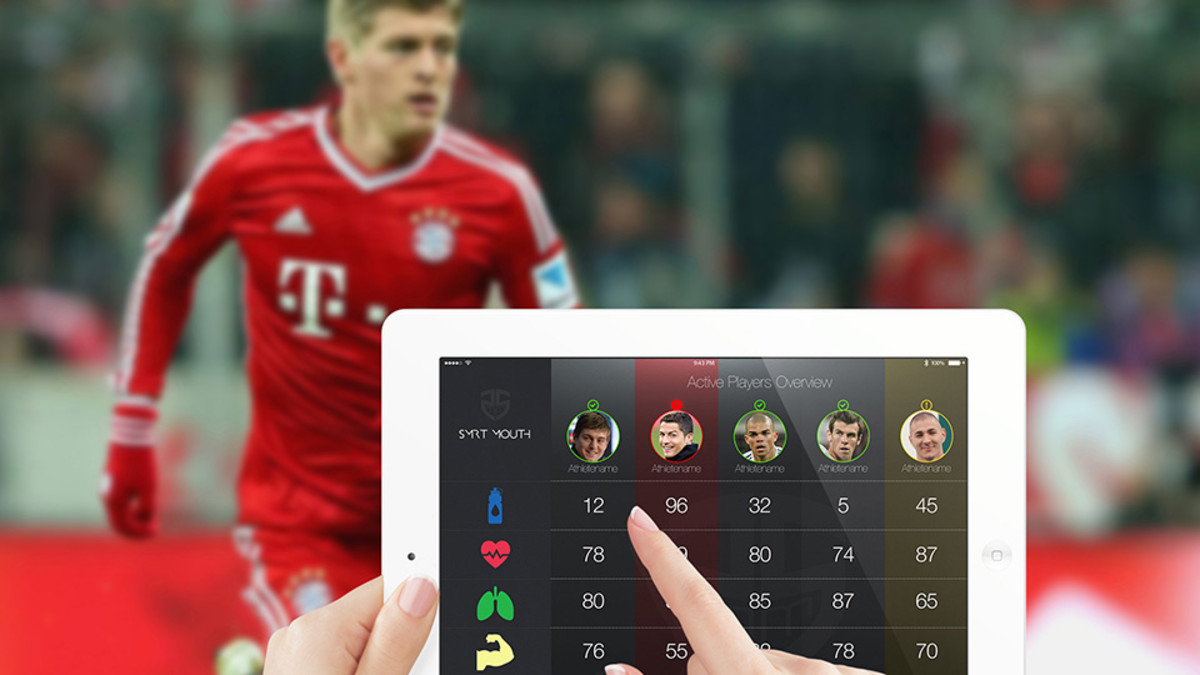Tech Talk: NFL champ's mouthguard company tackles high-tech hydration
Former Seahawks fullback Michael Robinson, who retired after helping Seattle to a Super Bowl win in 2013-14, says that the dehydration he suffered while taking an anti-inflammatory drug in his final season derailed his career, shutting down his kidneys and liver.
“I was very dehydrated when I took the drug,” Robinson tells SI.com. “If I would have known [the effects], I could have done something."
Robinson spent nine seasons in the NFL, playing in a total of 112 games since being drafted by the San Francisco 49ers in the 2006 NFL Draft. Needless to say, Robinson has plenty of experience as an athlete in need of the proper hydration on the field.
“As a former athlete, [I know] you cannot drink enough water," says Robinson. "You have to be able to track hydration and track how much energy is being put out to prevent injuries.”
Robinson had his career cut short because of the complications that come with being dehydrated, but a tragedy in 2000, when one of his closest friends died from a heat-related illness, is what motivates the former Seahawk to spark change in the sports world. That’s why Robinson joined with co-founder Dana Hawes to start a new company, SMRT Mouth, that will bring a "smart" mouthguard offering hydration monitoring to athletes by 2016.
What does the SMRT mouthguard do?
The mouthguard actually measures what is called osmolality in biofluid, allowing the high-sensitivity sensors to measure hydration, respiration, circulation and exertion. It thens sends that information to a tablet that's connected to the device.
In short, it can tell if a player is hydrated, and it can tell if a player is at risk of becoming dangerously dehydrated.
Who could benefit the most?
Robinson says he sees the need for this type of product most in youth sports, before multi-million dollar programs are there tracking every movement of a player. “Kids are [just] learning their body, growing up and becoming adults,” Robinson says.
Nike Hypervenom II soccer cleats merge Flyknit, mesh in new design
., Robinson says there simply isn’t the same education about nutrition and hydration all across youth sports in the U.S.
“Put a mouthguard in,” Robinson says. “It looks good—imagine a kid being able to throw this in, go to little league football practice and have a head coach with a smartphone tracking hydration, when he needs water breaks and when he shouldn’t be practicing.”
This data could offer coaches and trainers on the youth level with a life-saving tool they've never had before.
What's the potential?
In addition to youth programs, Robinson calls SMRT Mouth “another training tool” for the high-end athlete, the player who spends a significant amount of money on high-end trainers and teams of sports scientists. He also sees the potential value in being able to collect the biometric data that the mouthguard will provide.
Coming from a former Super Bowl champion, you'd think Robinson would see football as the main sport of focus, but the former Pro Bowler sees it beyond the NFL. SMRT Mouth has also been developing slimmer guards for other sports as well.
“Put a lightweight [guard] in to go running and you can track exertion, how much water you lose,” Robinson says. “There is so much we don’t think about [with] heat-related illness.”
With more real-time metrics, the type that SMRT mouthguards provide, Robinson hopes data turns into knowledge.
Tim Newcomb covers stadiums, design and gear for Sports Illustrated. Follow him on Twitter at @tdnewcomb.







